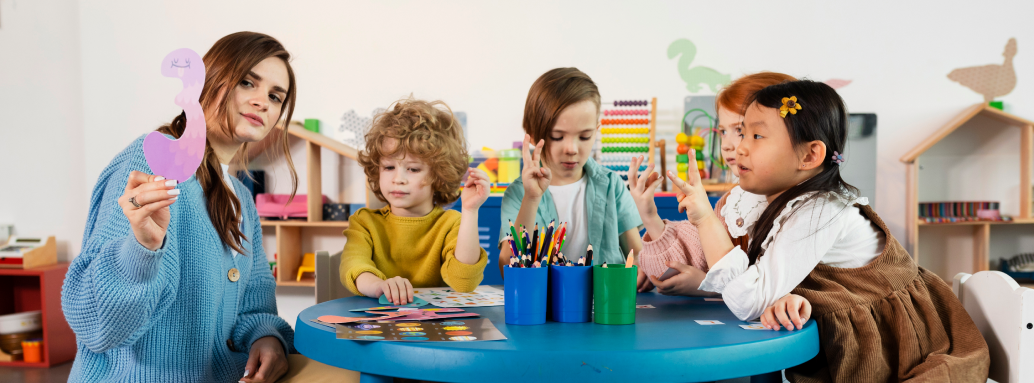Effective communication is the bridge that connects understanding, empathy, and expression. For children with special needs, this connection is even more vital. Whether you’re a parent, teacher, or caregiver, learning how to communicate effectively with these children can make a world of difference in their development and well-being.
Why Communication Matters in Special Needs Education
At its core, communication is about connection. It’s how we express our needs, share our thoughts, and build relationships. For children with special needs, effective communication isn’t just a tool—it’s a lifeline. It helps them navigate the world, understand others, and feel understood themselves.
Understanding the Basics of Communication in Special Needs
Different Types of Communication
Communication isn’t one-size-fits-all, especially for children with special needs. Let’s explore the various types:
- Verbal Communication: Using spoken language.
- Non-verbal Communication: Body language, gestures, and facial expressions.
- Augmentative and Alternative Communication (AAC): Tools like picture boards, speech-generating devices, and sign language.
Common Communication Challenges
Children with special needs may face a range of challenges:
- Speech Delays: Difficulty in forming words or sentences.
- Sensory Processing Issues: Struggles with interpreting sensory information.
- Social Skills Difficulties: Challenges in understanding social cues and norms.
Techniques to Enhance Communication
Active Listening
Active listening involves truly hearing what the child is trying to say—verbally or non-verbally.
How to Practice Active Listening
- Maintain Eye Contact: This shows that you’re engaged and paying attention.
- Use Affirmative Cues: Nodding or responding with "I see" or "Go on" encourages them to continue.
- Summarize and Reflect: Repeat back what they’ve communicated to ensure understanding.
Visual Supports
Visual aids can be a game-changer. They provide clarity and help children process information better.
Examples of Visual Supports
- Picture Schedules: Helps in understanding daily routines.
- Emotion Charts: Assists in expressing feelings.
- Instruction Cards: Breaks down tasks into manageable steps.
Simplified Language
Using simple, clear language can help in reducing confusion.
Tips for Simplified Language
- Short Sentences: Keep it brief and to the point.
- Concrete Words: Use words that are easy to understand and visualize.
- Repetition: Repeat important messages to reinforce understanding.
Building a Supportive Communication Environment
Creating a Safe Space
A supportive environment fosters confidence and reduces anxiety.
Components of a Safe Space
- Predictability: Consistent routines and expectations.
- Comfortable Setting: Minimized distractions and sensory triggers.
- Positive Reinforcement: Encouraging attempts and successes in communication.
Encouraging Peer Interaction
Social interactions are crucial for developing communication skills.
Facilitating Peer Interaction
- Structured Playdates: Organized activities with peers.
- Role-Playing: Practice conversations and social scenarios.
- Peer Mentorship: Pairing with understanding and supportive peers.
Leveraging Technology in Communication
Role of Technology in Special Needs Communication
Modern technology offers powerful tools for enhancing communication.
Popular Communication Tools
- Speech Apps: Apps that aid in speech and language development.
- Interactive Learning Programs: Engages children with fun, educational content.
- Video Modeling: Demonstrates appropriate communication behaviors.
Involving Families in the Communication Process
The Power of Family Involvement
Family involvement is key to reinforcing communication techniques learned in educational settings.
Strategies for Family Involvement
- Regular Updates: Sharing progress and strategies between educators and families.
- Home Practice: Encouraging families to practice communication techniques at home.
- Family Workshops: Training sessions to equip families with effective communication tools.
Professional Support and Collaboration
Role of Speech Therapists
Speech therapists are essential in diagnosing and developing communication strategies tailored to the child’s needs.
Working with Speech Therapists
- Collaborative Planning: Jointly setting goals and strategies.
- Consistent Practice: Regularly practicing techniques recommended by therapists.
- Feedback Loop: Continuous communication between caregivers and therapists for optimal outcomes.
Real-Life Success Stories
Story of Emma
Emma, a non-verbal child with autism, began using an AAC device. With consistent support, she now actively participates in class discussions.
Story of Jake
Jake, who struggled with social interactions, flourished after participating in structured playdates and peer mentorship programs.
Overcoming Barriers
Addressing Common Barriers
- Resistance to Change: Gradually introducing new communication methods.
- Resource Limitations: Utilizing cost-effective or free resources like printable visual aids.
- Time Constraints: Integrating communication techniques into daily routines.
Conclusion
Effective communication with children with special needs requires patience, creativity, and a tailored approach.
Understanding their unique challenges and implementing strategies like active listening, visual supports, and simplified language means we can bridge the gap in communication.
Technology, family involvement, and professional collaboration play vital roles in this journey.
Remember, every step taken towards better communication opens up a world of possibilities for these children, empowering them to express themselves and thrive.
FAQs
1. What is the most effective communication technique for children with special needs?
The most effective technique varies depending on the child's specific needs. However, a combination of active listening, visual supports, and simplified language often yields the best results. Tailoring the approach to the individual child’s abilities and preferences is crucial.
2. How can visual supports help in communication with children with special needs?
Visual supports like picture schedules, emotion charts, and instruction cards provide clarity and structure. They help children understand and process information better, making communication more accessible and less overwhelming.
3. What role does technology play in improving communication for children with special needs?
Technology offers tools like speech apps, interactive learning programs, and video modeling, which enhance communication by making it more engaging and tailored to individual needs. These tools can aid in speech development, social interaction, and learning.
4. How can families support communication development at home?
Families can support communication by practicing techniques like using visual aids, engaging in active listening, and encouraging daily conversations. Regular collaboration with educators and therapists, along with attending family workshops, can further strengthen these efforts.
5. Why is professional support important in communication development for children with special needs?
Professionals like speech therapists provide expert guidance in diagnosing communication challenges and developing personalized strategies. Their collaboration with caregivers ensures consistent practice and progress, maximizing the child’s communication potential.
Billing, Invoicing Automation & Smart Finances
Communication & Engagement
Child Development & Progress
Waitlist, Forms & Attendance
Effortless Team Management
Daily Updates That Matter
Templates & Printables
Blogs
Webinars
Case Studies & Testimonials
FAQs
Help Center


